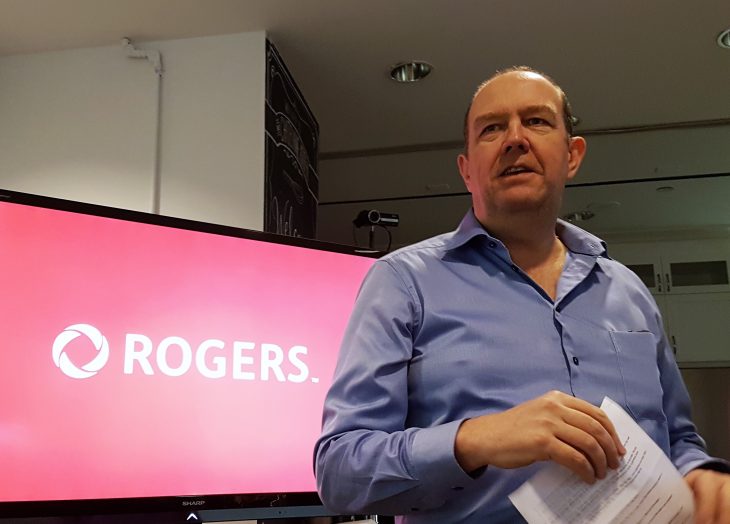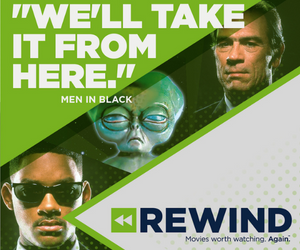
TORONTO – When Guy Laurence came to Canada nearly three years ago to take the helm at Rogers Communications, he was not shy about telling people his first goal was to tackle a mountain of customer service problems.
It was a widely acknowledged failing.
Even the fellow who stamped Laurence’s Canadian work visa back then wasn’t shy about telling him “Your service sucks,” the CEO recalled when he met with members of the media last Thursday to launch the company’s new self-service wireless bandwidth management tool.
Laurence set to work when he was hired in December 2013 and unveiled a three year plan in the spring of 2014 dubbed Rogers 3.0 that was largely focused on removing customer irritants. Laurence says the company identified the top five customer pain points and with this new real-time wireless bandwidth management tool, it has addressed all five.
He expects growth to follow. “If all the (customer) anxiety is gone, I’ll win,” he said.
The first issue was international roaming, which was addressed with Roam Like Home, a plan which dramatically cut costs and confusion for customers when they travel outside Canada. At first, RLH took a bite out of Rogers income. “We lost revenue on that at first, but now what’s happened is so many more people use data because they feel like they’re in control, I’m now net positive,” said Laurence. “I’m getting more revenue than I was before and the customer is 100% in control because everybody decides what they want to do with international roaming – and the number of complaints we get on roaming is down by over 90%.”
"I’m getting more revenue than I was before and the customer is 100% in control." – Guy Laurence, Rogers Communications
The second improvement was to Rogers Wireless bills, which many customers struggled to fully understand. The new bill was unveiled in 2015 and will come to enterprise customers in 2017. Better bill clarity has meant five million fewer calls to Rogers call centres.
The third was to offer unlimited (wired) data to the home, an option which Laurence says a quickly-growing majority are selecting, while the fourth has been to offer customer service through Facebook and Twitter – an option now chosen by about 250,000 customers per month.
The fifth, wireless data self management, is something that was a year in development. The bill payer for families on Share Everything plans will now get to allocate a certain level of data to each member of the plan – and will be able to identify who is using their data bucket, too. And let’s say one of their children is misbehaving? The bill payer (mom or dad, most likely) can shut data off for a certain device.
Managing their wireless data “is a source of huge frustration for families,” says Laurence, and the last thing he wanted to do was to put the company in a position of managing that for them. It makes far more sense to let the families themselves decide what’s best, and they can do it in real time. “The issue is you’ve got anxiety in the bill payers about how much is it going to cost me… What they’re saying is ‘I want control over it.’”
This should help lessen the 1.5 million annual calls Rogers call centres field over wireless data buckets.
Laurence was also asked that instead of building a tool to let families self-manage their data consumption within buckets, why not just toss out the buckets and open up the network to unlimited usage?
“If you go unlimited, you blow up your network,” he said. The demands for real time video if everyone could be on an unlimited plan would quickly overwhelm the network, he insisted. When asked about T-Mobile’s unlimited data offer in the States, Laurence quickly rattled off the limitations to that company’s plan – namely that T-Mobile’s unlimited data only comes on its 3G network and it’s only for certain services of T-Mobile’s choosing, “on plans where you get absolutely screwed,” he added.
“It’s a marketing hook, it’s not genuine to me and it can’t be genuine just based on the physics of the networks.”
When asked by a reporter, Laurence also addressed the CRTC’s Wireless Code of Conduct, established in 2013 and if Rogers’ moves are meant to mollify the Regulator.
“I don’t think there should ever have been a need for the Wireless Code of Conduct because the businesses should provide good enough customer service so there’s no requirement,” he explained.
“We should make it redundant because we improve our relationships with our customers so much. That’s the way it should work.”



